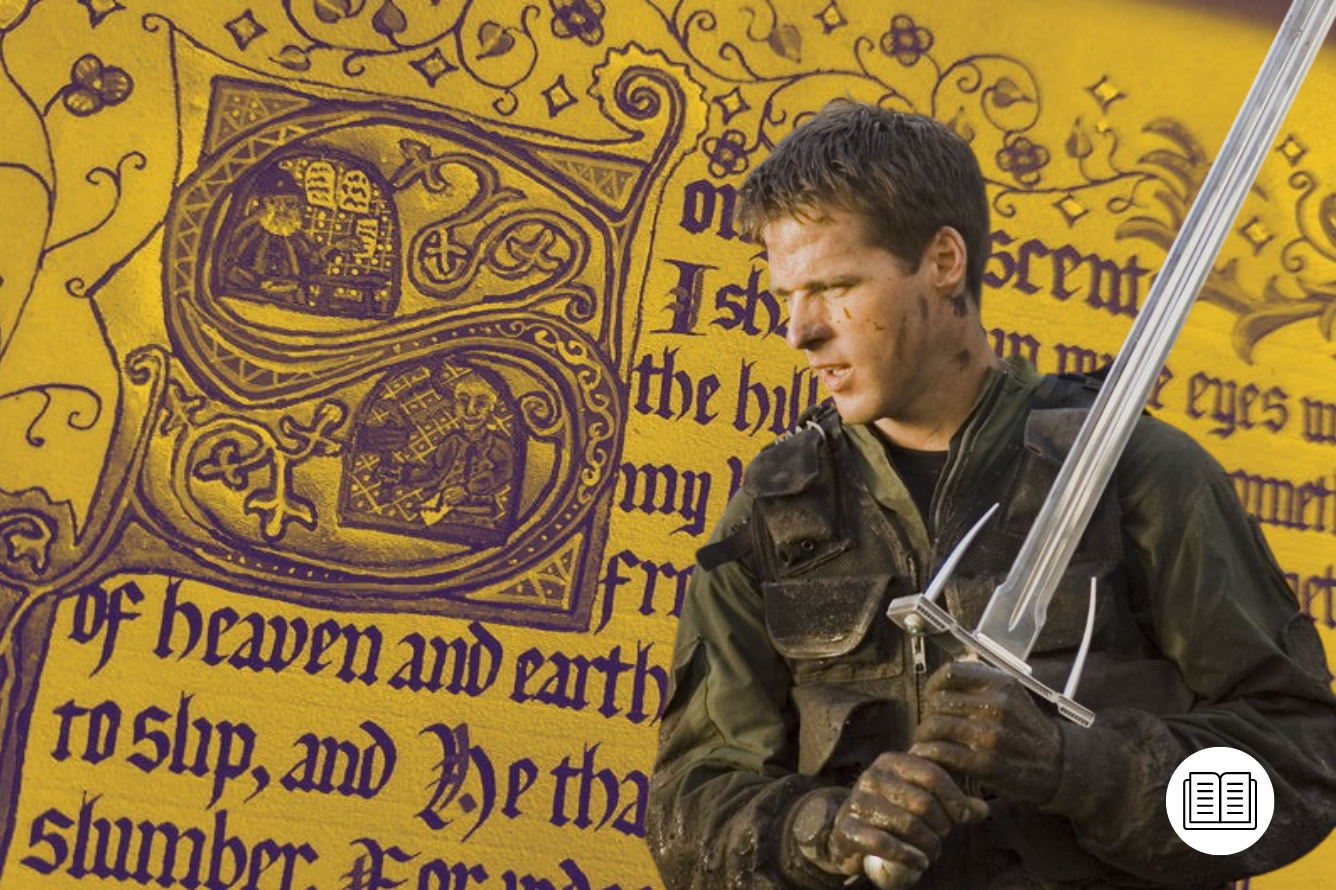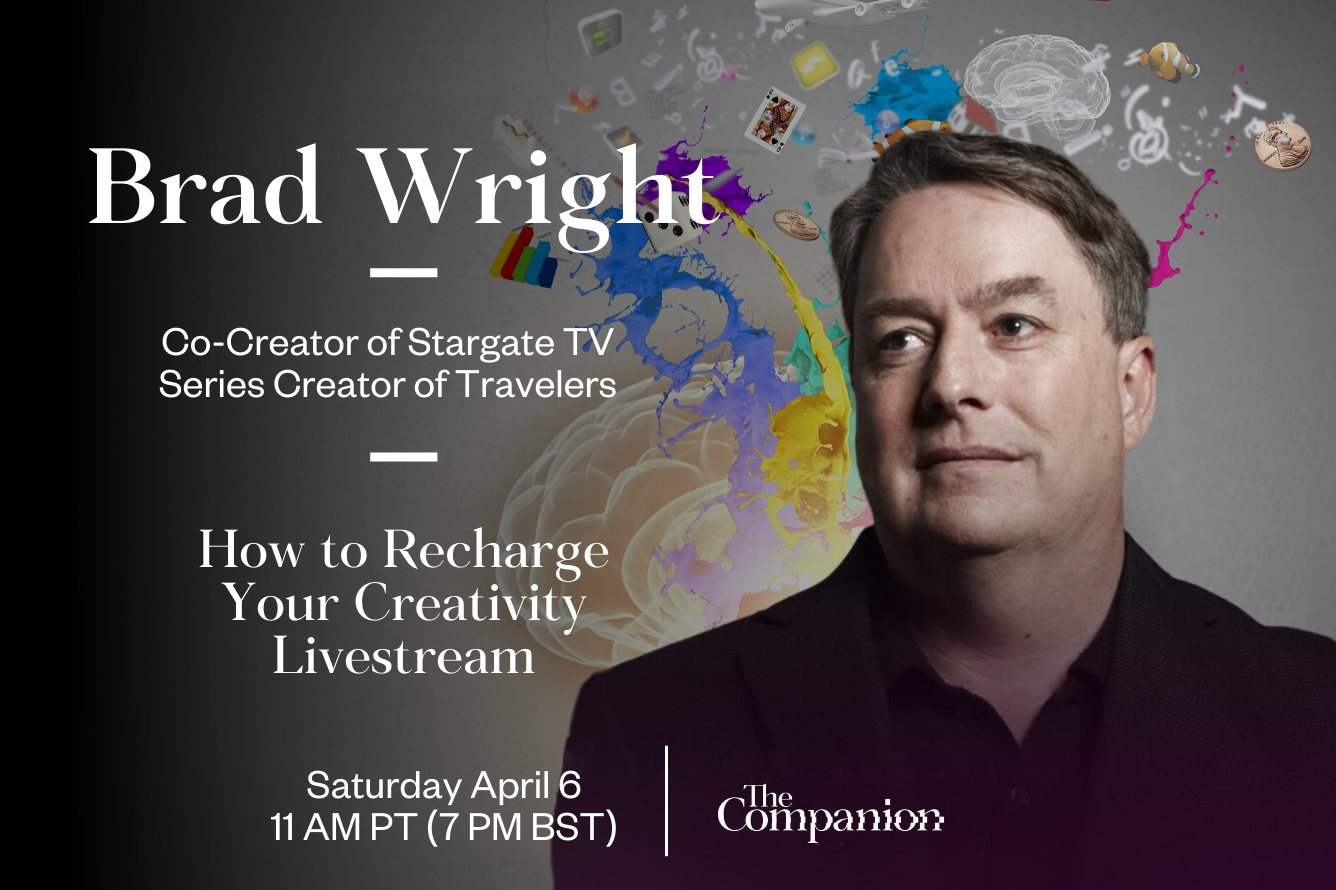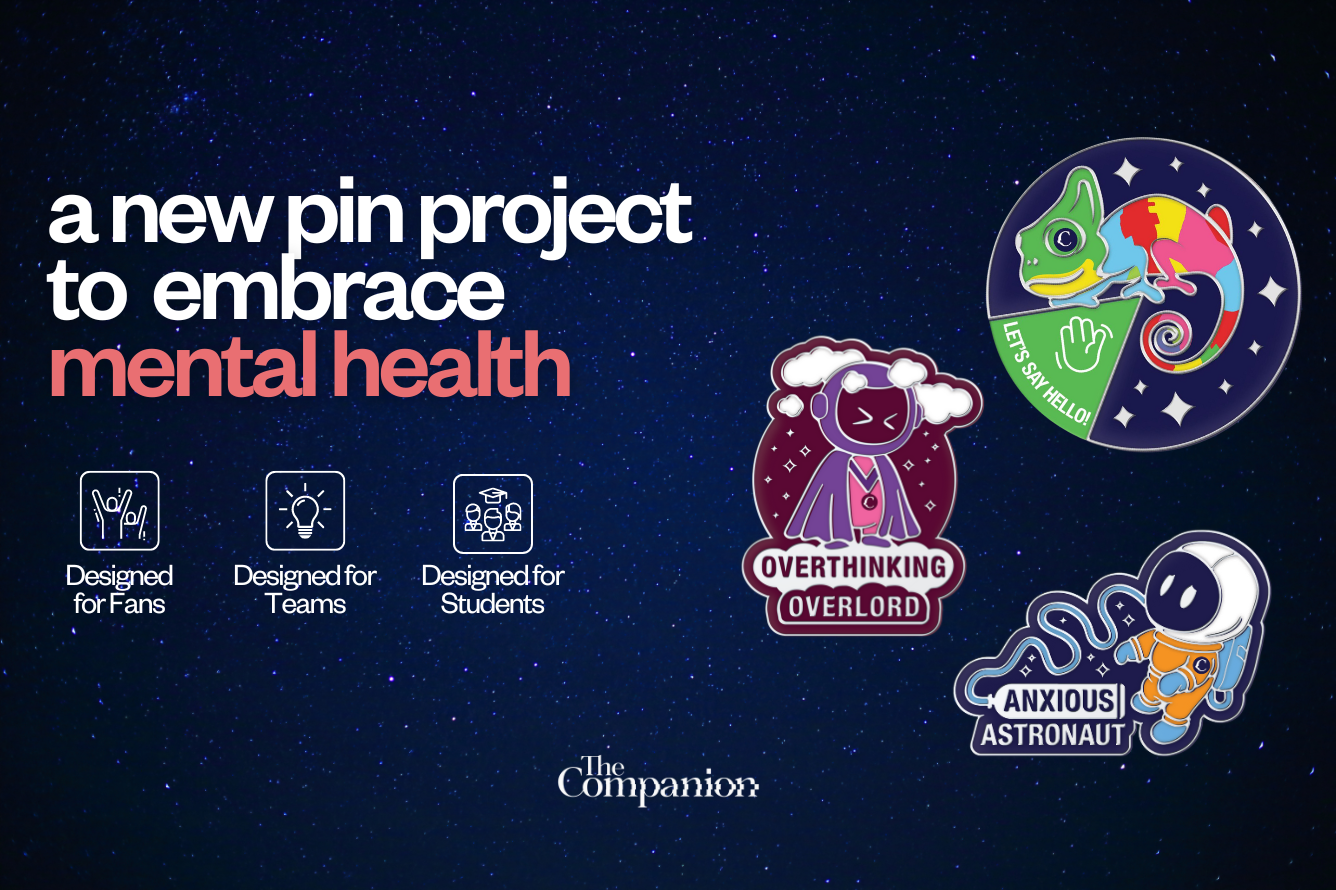In the later seasons of Stargate SG-1, ample use is made of the Arthurian legends during the team’s fight against the Ori. The well-known characters whose stories have been passed on throughout the generations since the European Middle Ages are given a sci-fi spin to become a part of the overall Stargate mythology.
Two of the most important elements from Arthurian lore that are used primarily in Stargate SG-1 (with a little help from Stargate Atlantis) is the figure of Merlin and the Holy Grail – or Sangraal – object. In this article, I’ll discuss the figure of Merlin in the Arthurian legends in contrast to his use in Stargate mythology, and do the same for the Sangraal.
The History of Myrddin/Merlin
One of the main Arthurian characters introduced (or reintroduced, but more on that shortly) in holographic form in the Stargate SG-1 episode ‘Avalon, Part 1’ (S9, Ep1) is Myrddin (Matthew Walker) – which is the Welsh form of Merlin and pronounced as mur-thin. Once SG-1 figures out his true identity, the viewer can also draw certain conclusions as to what type of person they need to search for. The Merlin of Medieval literature, however, has a much more complex origin and role than is usually shown in popular culture.
Where Did the Figure of Merlin Originate?
Merlin (Myrddin in Welsh and Marzhin and Merzhin in Cornish and Breton which are closely related Brythonic, or British Celtic, languages) seems to be a composite of various figures. One of these is the Welsh “wild man of the woods”, Myrddin Wyllt.
Myrddin Wyllt in the Welsh Tradition
Myrddin Wyllt – or “Myrddin the Wild” – is based on a pseudo-historical figure born circa 540 CE in what is now Scotland. Also called Myrddin Emrys (Myrddin Ambrosius), Merlinus Caledonensis (Merlin of Caledonia), and Merlin Sylvestris (Merlin of the Woods), he is a chief bard in the legends and is called the speaker of several of the Middle Welsh poems in the 13th century Black Book of Carmarthen and the 14th century Red Book of Hergest.
As any good Dungeons & Dragons player knows, the distance between the storyteller and the spellcaster is zero. In the lore of Brythonic Britain, the spoken word had power, and bards feature in mythology as magical figures, mystics, adventurers, shape-shifters, and seers.
After the Battle of Arfderydd in 573 CE, Myrddin is said to have “gone mad” and feels into the forest where he received the gift of prophecy and got the moniker “the Wild.” These legends of Myrddin resemble that of the legendary wild man figure of Lailoken who shared his prophecies with the 6th-century court of Strathclyde (parts of lowland Scotland and Northern England).
This “wild man” iteration of Myrddin serves as part of the inspiration behind Geoffrey of Monmouth’s Merlin character in his semi-historical/semi-fictional 12th-century epic, The History of the Kings of Britain. It’s also Geoffrey’s version of Merlin that most of us have come to know.
Geoffrey of Monmouth’s Merlin
Geoffrey of Monmouth is most well-known for his work on the Historia regum Britanniae (The History of the Kings of Britain) text from circa 1136 CE. In this text, we find the character “Merlin” as part of the legends of King Arthur. This Medieval Merlin is a composite figure who is both a prophet and a wizard or enchanter of great power.
Merlin’s conception and birth in this instance, however, are quite interesting – reflecting changing attitudes towards supernatural power. He is sired by a devil but has a mortal mother. In fact, in the works of French poet Robert de Boron and in the 13th century Vulgate Cycle (also called the Prose Lancelot Grail), Merlin’s birth is devised by devils in hell, and Merlin is the outcome of a project to induce the Antichrist. However, Merlin’s mortal mother baptizes Merlin and rather than becoming a force of evil in the world, he becomes a force for good.

According to The University of Rochester’s Camelot Project, it is also from the incubus that sires him that Merlin gets his powers: “Since he is the son of a devil, he is endowed with the knowledge of all things past, and God bestows on him the gift of knowing the future.” Monmouth also writes the Prophetiae Merlini (Prophecies of Merlin) and the poem Vita Merlini (Life of Merlin), which references his interactions with Vortigern and Arthur.
Merlin’s Story Grows: Malory’s Le Morte D’Arthur and Later Works
Merlin soon becomes a central figure in the Arthurian legends, not only as Arthur’s advisor but even putting the events in motion that would lead to his conception. He helps Arthur to become king and helps him to set up his kingdom. It becomes quite apparent that Merlin becomes a more and more important part of the Arthurian corpus as these legends grow, as seen in the Vulgate Cycle.

In Sir Thomas Malory’s 15th-century text Le Morte d’Arthur (The Death of Arthur), Merlin also gives various prophecies during the first part of the book. These come into play during the rest of the book, even after Merlin has been locked away (but more about this later). Most likely drawing from the Prose Merlin, as Joshua J. Mark, Melin (World History Encylopedia) writes:
“Malory’s Merlin is the final culmination of all the other versions of the seer pre-1469 CE: a powerful wizard of prophetic insight who can control the elements, shape-shift, alter other people’s perception of reality, and read people’s hearts and true desires.”
Merlin is also made the architect of Camelot, most notably in Idylls of the King by Lord Alfred Tennyson. This 12-poem cycle, published between 1859 and 1885 tells the Arthurian legends in blank verse. These legends include the rise and fall of Arthur’s ideal kingdom, the adventures of the knights Lancelot, Geraint, Galahad, and Balin and Balan, Arthur’s love for Guinevere and her betrayal of him, and Arthur’s death in combat with Mordred.
Merlin’s End in Arthurian Legends and Stargate
In the Arthurian legends, Merlin is usually locked inside a cave or a grave by his apprentice. This apprentice is also (usually) a woman that he is in love with. Morgan le Fay – Arthur’s half-sister – is in many cases the apprentice (the plot thickens!), and in Le Morte d’Arthur it’s Viviane (Nimue). Once the apprentice has learned all that they can from Merlin – except for his gift of prophecy – Merlin is either imprisoned or buried. The prison or grave can be as simple as a hole underneath a rock, as in Le Morte d’Arthur, or as involved as a magic tower that seems to be made from crystal.
Merlin’s end in Stargate, on the other hand, is heroic and selfless as he gives up his own life to save that of others. In the Stargate Atlantis episode ‘Before I Sleep’ (S1, Ep15) – the character’s first appearance by stealth – we learn that of a Lantean called Moros, who served as a High Councillor of the Council of Atlantis during the war with the Wraith.

Once fled to Earth, Moros – who becomes known as Merlin – ascends and then realizes what a threat the Ori are. He descends but keeps all the knowledge that he knew as one of the Ascended. This knowledge makes it possible for him to build his anti-Ori weapon which will be called the Sangraal later on. After the Sangraal is destroyed by Morgan le Fay (Sarah Strange), she, too, realizes the threat of the Ori and places Merlin in stasis so he can rebuild the Sangraal in the future when needed.
Merlin is found about a thousand years later in the Stargate SG-1 episode ‘The Quest, Part 2’ (S10, Ep11) and taken out of stasis. Unfortunately, his body has deteriorated during his time in stasis – he is no longer the force he was even after descending. Because Merlin realizes that there isn’t enough time left for him to physically rebuild another Sangraal, he “downloads” his mind into an Ancient repository of knowledge. Dr. Daniel Jackson is the one to use the repository and Merlin’s mind is downloaded into Daniel’s mind. Merlin’s physical body would later also die.

Avalon in Arthurian Legends and Stargate SG-1
In the Arthurian legends, Avalon – or the Isle of Avalon – plays an important role; specifically as the place where King Arthur is taken after being mortally wounded by Mordred during the Battle of Camlann. Rather than being a physical location, Avalon is often linked to Celtic tales of the Otherworld – the land of the gods – with which it might share some etymology: In Old Irish, one of the many names for the Otherworld was “Emain Ablach” (the Isle of Apples) and the Brythonic root for Avalon is believed to be “avallen”, meaning apple tree.
Often in these texts, it’s in Avalon where Arthur can be healed from this wound. Leila K. Norako writes on Avalon (Camelot Project):
“In the Vita [Merlini], for instance, Morgan tells Arthur upon his arrival that he will need to stay for a long time for his wounds to be properly healed. In later Medieval Arthurian works, writers imply that Avalon is his permanent resting place, perhaps his place of death and burial.”
The “non-Stargate Avalon” has a significant connection with Morgan le Fay and certain other women who have great knowledge of healing or other arts. Morgan le Fay is also often said to be the ruler or mistress of Avalon.

In the Stargate SG-1 episode ‘Avalon, Part 1’ (S9, Ep1), Merlin has a more significant connection with Avalon, which is a vault he constructed beneath Glastonbury Tor, perhaps echoing the earlier myths about Merlin being imprisoned in a cave as much as his stasis pod does. The hidden vault built by Merlin contains various “treasures”; technology that the team can use in their fight against the Ori. The most important technology that the team looks for, is the Sangraal – a weapon that can destroy the Ori.
The Tor – an Old English word for a hill – became an island when the Somerset Levels flooded and was home to an early Medieval church supposedly founded by Joseph of Arimathea and from the 12th century, enterprising monks looking to drum up some business for an otherwise unassuming provincial abbet proclaimed it to be the resting place of King Arthur.
The Sangraal or Holy Grail
Especially in the later Arthurian legends, which contain more Christian elements, the Holy Grail or Sangraal plays a significant role. It’s this ultimate treasure that the Stargate mythology uses as a name for the ultimate weapon against the Ori. However, the Grail in the Arthurian world is quite different.
What is the Holy Grail?
Although the Grail started out as a grail and not holy – for example in the text Perceval, le Conte du Graal by Chrétien de Troyes (circa 1190 AD) – it soon became a holy relic during the Arthurian legends of the Middle Ages. The grail became the Holy Grail in the late 12th century when Robert de Boron noted in Joseph d’Arimathie that the object was Jesus’s vessel from the Last Supper and that Joseph of Arimathea had used it to catch Jesus’s blood at his crucifixion. Because of this change in the grail’s nature, the Holy Grail legends soon combined with that of the Holy Chalice.

The Holy Chalice
Before the Holy Grail was seen to be the cup/vessel which Jesus used to serve wine at the Last Supper, the Holy Chalice was understood to be this object. The scene with Jesus offering wine to his disciples appears in three of the gospels (Matthew, Mark, and Luke) as well as 1 Corinthians. It’s only a short piece of scripture in each case, for example, in Matthew, it is only three verses long:
27 And he took a cup, and when he had given thanks he gave it to them, saying, “Drink of it, all of you, 28 for this is my blood of the covenant, which is poured out for many for the forgiveness of sins. 29 I tell you I will not drink again of this fruit of the vine until that day when I drink it new with you in my Father’s kingdom.”
However, the Last Supper forms the basis of the Eucharist that is celebrated by Christians and the significance of the chalice itself increased during the Early Middle Ages.
The Sangraal/Holy Grail in the Stargate SG-1
As stated earlier, the Sangraal in Stargate SG-1 is created by Merlin and is not a holy relic, but rather like the grail was before the work of Chrétien de Troyes in the 12th century. In fact, its key component crystal or stone is probably most similar to the Grail when it’s supposed to be the same as the philosopher’s stone in alchemy, from which the elixir vitae or “elixir of life” could be obtained. The grail being the philosopher’s stone is found in some of the Arthurian grail legends, for instance, the 13th century Parzival by Wolfram von Eschenbach.
The Sangraal as a Weapon
In the case of Merlin’s Sangraal, it takes life rather than gives life. This anti-Ori – and also anti-Ascended – weapon’s red crystal/stone harks back to the blood of Jesus that is associated with the Holy Grail. The word “Sangraal’s” etymology has also been changed by some, like the 15th-century writer John Hardyng, to mean “holy blood” and not “holy grail”.
Conclusion
The rich tapestry of mythologies and legends used within the overarching lore of Stargate SG-1 and Stargate Atlantis is further enriched by the original use of the Arthurian legends. Rather than overly complicating the mythology, the themes of sacrifice and devotion that seep in from the Medieval Arthurian legends suit the fight against the Ori perfectly.
This article was first published on September 6th, 2022, on the original Companion website.
The cost of your membership has allowed us to mentor new writers and allowed us to reflect the diversity of voices within fandom. None of this is possible without you. Thank you. 🙂










